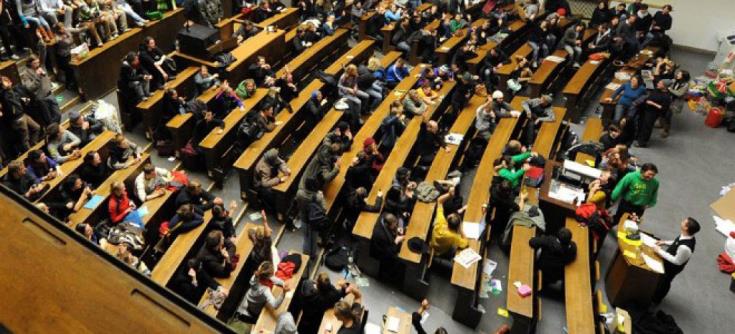Tertiary educational attainment expressed as percentage of those aged 30 to 34, having successfully completed tertiary education in Cyprus stood at 55.8% in 2017, the second highest rate in the EU, (47.2% for men and 63.5% for women), significantly surpassing the EU set target of 46%, according to Eurostat, the statistical service of the EU. Back in 2002 the same rate was only 36.0% (35.9% for men and 36.1% for women).
In Greece the tertiary education attainment rate was 43.7% in 2017 (37.0% for men and 50.5% for women), surpassing the EU target of 32.0%. The same rate in 2002 was only 23.5% (22.2% for men and 24.9% for women).
When it comes to early leavers from education and training expressed as percentage of the population aged 18-24 with at most lower secondary education and who are currently not in further education or training, the rate in Cyprus stood at 8.6% (9.4% for men and 7.8% for women), much lower than the EU set target of 10.0%. In 2002 the same rate was 14.9% (22.5% for men and 8.2% for women). In Greece the same rate was 6.0% in 2017 (7.1% for men and 4.9% for women), while back in 2002 it was 15.1% (19.6% for men and 10.6% for women).
Eurostat notes that one of Europe 2020 strategy’s targets is that at least 40% of 30-34-year-olds in the EU should have completed tertiary education by 2020. This share continued to steadily increase, from 23.6% in 2002 when the series started to 39.9% in 2017. This growth pattern was even more significant for women (from 24.5% in 2002 to 44.9% in 2017) than for men (from 22.6% to 34.9%), meaning women being above and men still below the overall Europe 2020 target.
Meanwhile, the share of early leavers from education and training (aged 18-24) has steadily decreased in the EU, from 15.3% in 2006 to 10.6% in 2017. Young women (8.9%) are less affected than young men (12.1%). The Europe 2020 target is to reduce the rates of early school leaving in the EU to below 10% by 2020.
In 2017, the proportion of those aged 30 to 34 who had completed tertiary education increased compared with 2002 in every Member State for which the time-series is available. In 2017, at least half of the population aged 30 to 34 had completed tertiary education in Lithuania (58.0%), Cyprus (55.8%), Ireland (53.5%), Luxembourg (52.7%), as well as Sweden (51.3%). At the opposite end of the scale, the lowest proportions were observed in Romania (26.3%), Italy (26.9%) and Croatia (28.7%). Fourteen Member States have already met or exceeded their 2020 national target for this indicator: the Czech Republic, Denmark, Estonia, Greece, Italy, Cyprus, Latvia, Lithuania, the Netherlands, Austria, Poland, Slovenia, Finland and Sweden. In 2017, the share of persons aged 30 to 34 who have completed tertiary education is higher for women than men in all Member States.
Compared with 2006, the proportion of early leavers from education and training decreased in 2017 in all Member States for which the time-series is available, except the Czech Republic (increase from 5.1% to 6.7%), Romania (from 17.9% to 18.1%) and Slovakia (from 6.6% to 9.3%). In 2017, the lowest proportions of `early school leavers` were observed in Croatia (3.1%), Slovenia (4.3%), Poland (5.0%) and Ireland (5.1%), while the highest shares were recorded in Malta (18.6%), Spain (18.3%) and Romania (18.1%). Fourteen Member States have already fulfilled their 2020 national target for this indicator: Belgium, Denmark, Ireland, Greece, France, Croatia, Italy, Cyprus, Latvia, Lithuania, Luxembourg, the Netherlands, Austria and Slovenia. In 2017, the share of early leavers from education and training was lower for women than men in every EU Member State, except Bulgaria, Hungary, Romania and Slovakia.
CNA






